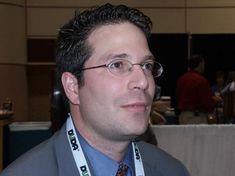
A large harvest of pears in the northwest of the US has producers in good heart, but will the UK expand its importance as an export market. Jeff Corea, director of international marketing at USA Pears, told the Journal: “The UK is of course retail driven and our representative there Andrew Brown works closely with the retailers to co-ordinate our window. We are a gap filler, and the strength of our season in the UK is, and will continue to be, dependent on the European competition.”
Anjou is the predominant variety, with Red Anjou and Bosch following on in the season. “We'd prefer not to be a gap filler,” added Correa, “and exporters would prefer a bit more continuity from season to season. Anjou can be marketed against Conference and I believe there are a number of marketing opportunities that are being missed.”
Of a bumper crop of 16 million boxes of pears this season, 11m will be green Anjou and 800,000 red Anjou, while 3m boxes of Beurre Bosch will also be taken off the trees. There is no doubt in Correa's mind that the varietal mix is right. “Anjou is a durable pear, it has an excellent shelf-life, it is easy to move, and, perhaps most importantly, importers like it. When ripened properly, it eats extremely well and I would expect more ripe and ready-to-eat pears at retail in the UK in the years to come.
“The consumer wants instant gratification and you do not often get that with a pear. People don't want to put a piece of fruit to one side for three days before they eat it ñ I think that is our biggest challenge.”
The UK is the largest export market for organic pears from the northwest US. There will be 600,000 boxes of organic pears being produced in the regions and, while still a niche market, it is an expanding niche that attracts promotional funding. “We are looking to work jointly with Washington on organics,” said Correa. “There are a lot of occasions where the same shippers are doing organic pears from both and if it expands the category range it will be of mutual benefit.
“The retailers are interested in that. A wider range gives a more robust on-shelf presence and encourages buy-in from both the buyer and eventually the consumer.”



